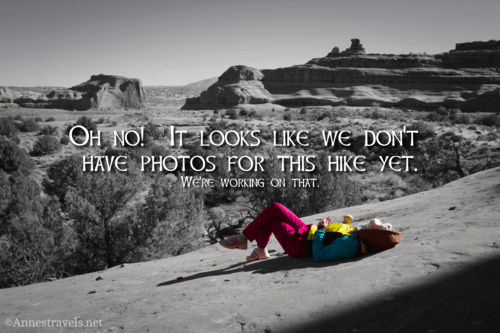
4×4 Road: Queen of Sheba Mine Road – Death Valley National Park
High clearance required 4×4 road up an alluvial fan to an old lead mine.
| Total Distance: 3.8 miles point to point (dead end) | Elevation Gain: 1,191ft. up, 2ft. down (-243ft. to 946ft.) |
| Road Difficulty: 2.0 | Bicycle Difficulty: More Difficult |
| View Rating: 4.0 out of 5.0 stars | Author’s Rating: 3.0 out of 5.0 stars |
| Visitor Rating: (Click to rate) [Total: 0 Average: 0] | Visitor Difficulty Rating: (Click to rate) [Total: 0 Average: 0] |
| Pets: Leashed (on road) | Horses: Yes |
| Best Seasons: October-May | Special Permits: None |
| Water Availability: None | Overnight Options: Yes at least 1 mile from the West Side Road |
| Amenities: None | Crowd Factor: Solitude |
| Uses: | Road surface: |
| Features: | Hazards: |
Mile-by-Mile: Queen of Sheba Mine Road
0.0 Queen of Sheba Mine Road on the West Side Road (-243ft.). Drive up the very gravelly road. Be sure to look back at Death Valley, the Black Mountains, and the water tanks along the West Side Road. (36.030091°, -116.829482°)
3.8 Old shack (956ft.). The shack has a visitor register; there are also some other buildings to explore in the area. From here, a maze of roads goes off to various buildings, ore bins, audits, tunnels, and much more. (35.999706°, -116.885260°)
History & More
One driver of the road commented that this is one of the straightest roads on the west side of the West Side Road. However, the road is gravelly and may be washed out, especially after storms.
The Carbonite Mine – up the hill from the Queen of Sheba Mine – was first prospected in 1907. It was named for the type of ore found there (lead carbonate with silver, but apparently they didn’t spell it quite the same!)
Jack Salsberry was one of the people who helped develop the Carbonite Mine. As usual, transportation was an issue – it was simply too expensive to transport the ore to a railroad. Jack built a wagon road across Death Valley and then across the Black Mountains to the Amargosa Range. This was a thirty-mile route with teams of mules or horses. From there, a gasoline tractor hauled the ore the last sixteen miles to the Tonopah and Tidewater Railroad in the town of Zabriskie. Today, Salsberry Pass on the Jubilee Pass Road is named for Jack on his route through the Black Mountains.
Water and other supplies were hauled back from Zabriskie by Jack’s pack animals. Eventually, the tractor was replaced with trucks. In its heyday, the mine made a nice profit, despite the cost of transportation. About 11,000 tons of ore were extracted from the mine from 1915-1918.
Workers at the Carbonite Mine found their thermometer climbing to 130F in the shade during the summer – it reached 164F at one point. The miners slept in the tunnels just to try and stay alive.
The Queen of Sheba Mine appears to be an extension of the Carbonite Mine. It was first mentioned in 1924, though the company soon discovered that it was not the main ore body, which was higher up on the mountain. Still, the two mines continued to be profitable into the 1930s. It’s estimated that the Queen of Sheba Mine yielded 5 million tons of lead and 100,000 ounces of silver.
Download Route Map
Driving Directions
Along the West Side Road, 25.7 miles south of the northern terminus and 10.2 miles north of the southern terminus.
It is extremely dangerous to enter a mine due to unstable shafts, gasses, and more. Do not enter mines, even if they are apparently open!
Walking on, climbing, entering, ascending, descending, or traversing any mine, structure, feature, or ruin is prohibited.
Toxic chemicals or ore may be present around mine sites. Enter at your own risk.
Possessing, destroying, injuring, defacing, removing, digging, or disturbing any mine, structure, feature, or ruin is also prohibited.
Camping is not allowed within one mile of a paved road, developed area, or dirt road that is closed to camping.
Camping is not permitted within 100 feet of a flowing stream, spring, or other natural body of open water.
No camping is permitted on the floor of Death Valley, within one mile of Darwin Falls and Greenwater Canyon, on the active/shifting sand dunes, and certain other canyons and backcountry areas.
Camping is also prohibited within one mile of the Ubehebe Lead Mine, Leadfield Mines, Keane Wonder Mill, and Skidoo Mill.
Camping is limited to 30 days per calendar year within the park.
Fires are permitted in NPS-provided fire grates or grills ONLY.
Leave No Trace Principles are enforced
Drones and model aircrafts are prohibited
Camping is permitted only in designated sites or in areas open to dispersed backcountry camping
All park rules and regulations
12 Month Pass: $55/Death Valley Annual Pass (valid at Death Valley National Park). $80/America the Beautiful Annual Pass (valid at all national park and federal fee areas). $20/Annual Senior Pass (62 years or older US citizens; valid at all national park and federal fee areas). Free/4th Grade Pass (Valid Sept. 1-August 31 of the child’s 4th Grade school year). Free/Military Pass (valid for all active military personel and their dependents with a CAC Card or DD Form 1173).
Lifetime Pass: $80/Lifetime Senior Pass (62 years or older US citizens; valid at all national park and federal fee areas). Free/Access Pass (available to all US citizens with perminent disabilities). Free/Access for Veterans and Gold Star Families Pass (valid for all military and veterans with a CAC card, Veteran HJealth Identification Card, Veteran ID Card, or veteran’s designation on state-issued drivers license or identification card.)


